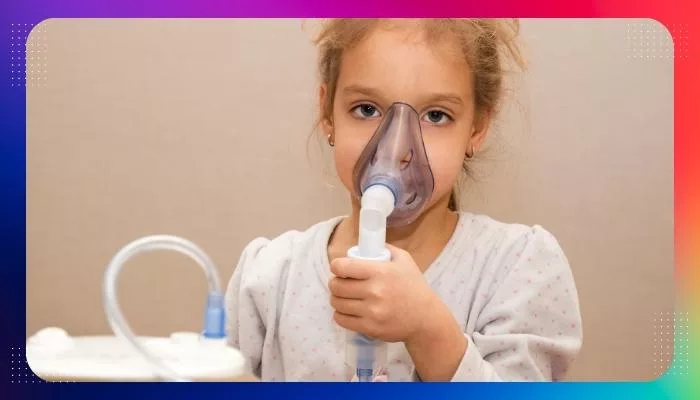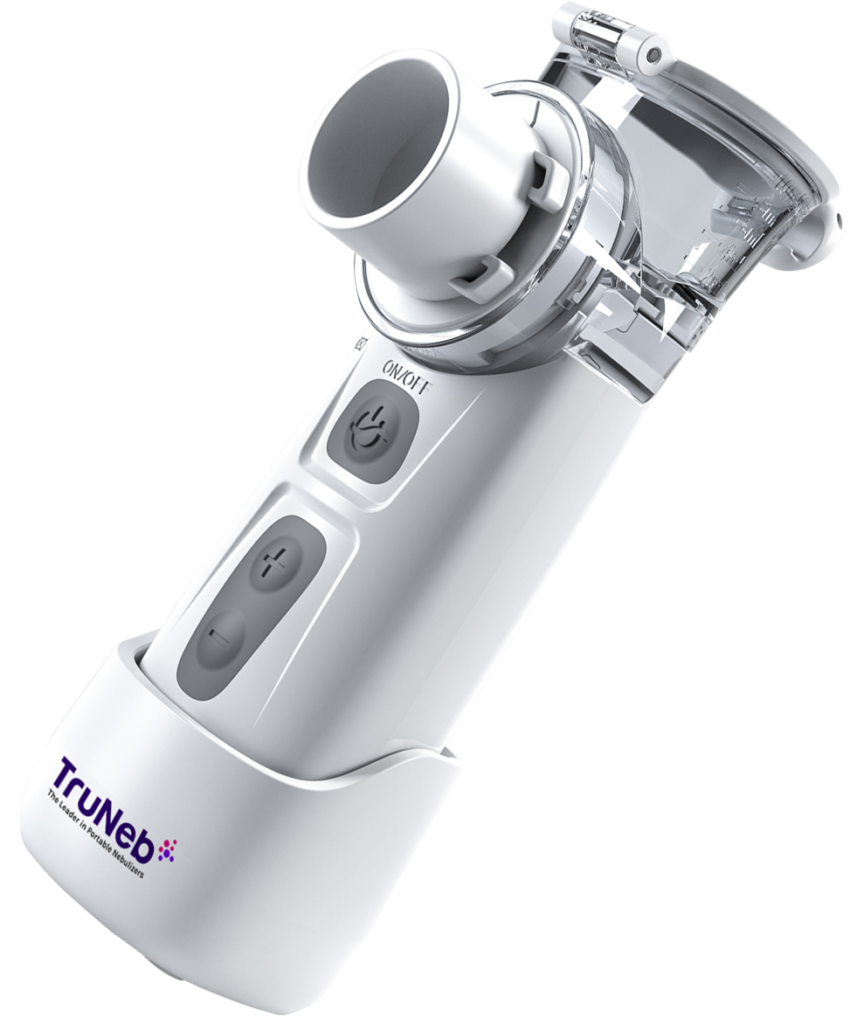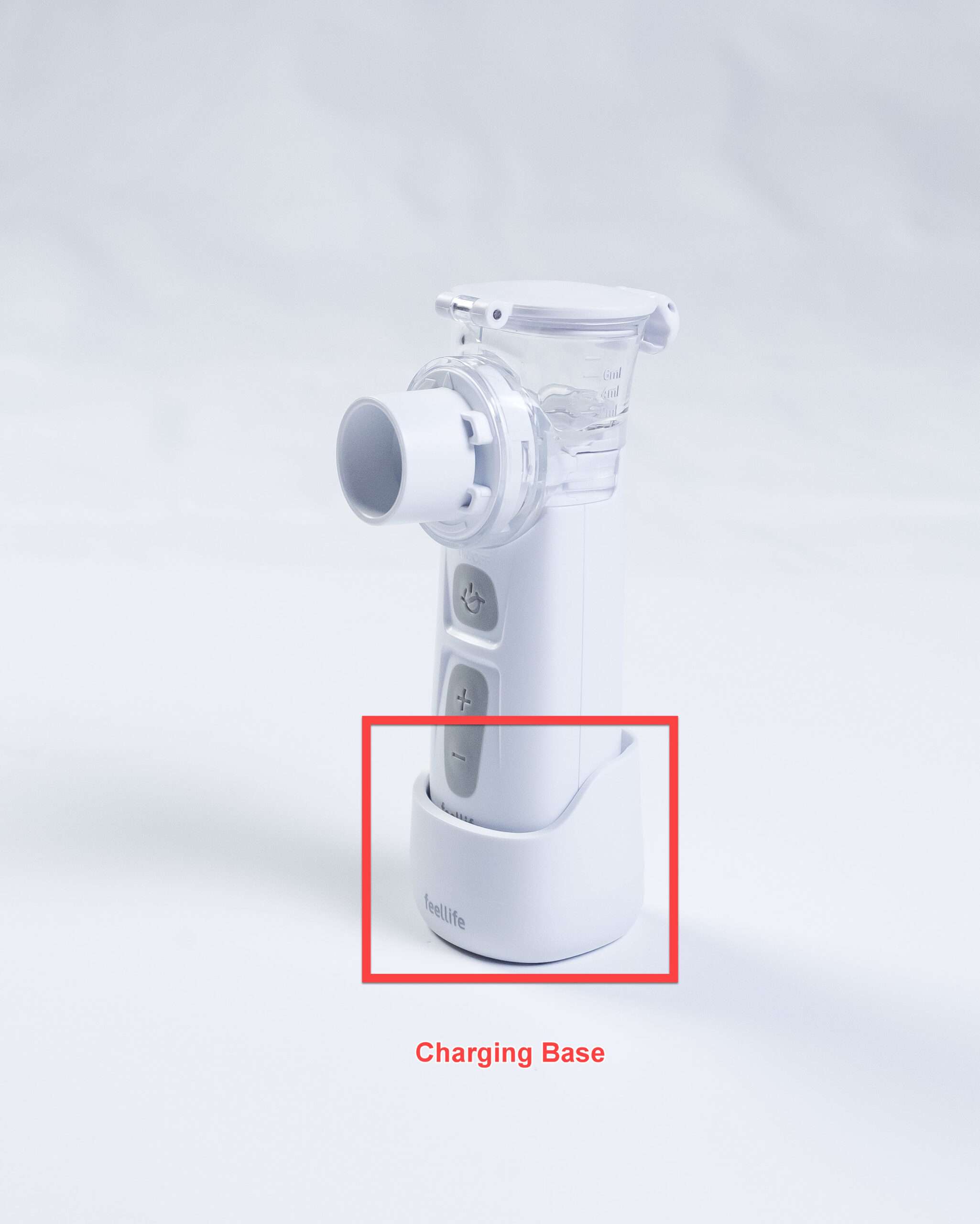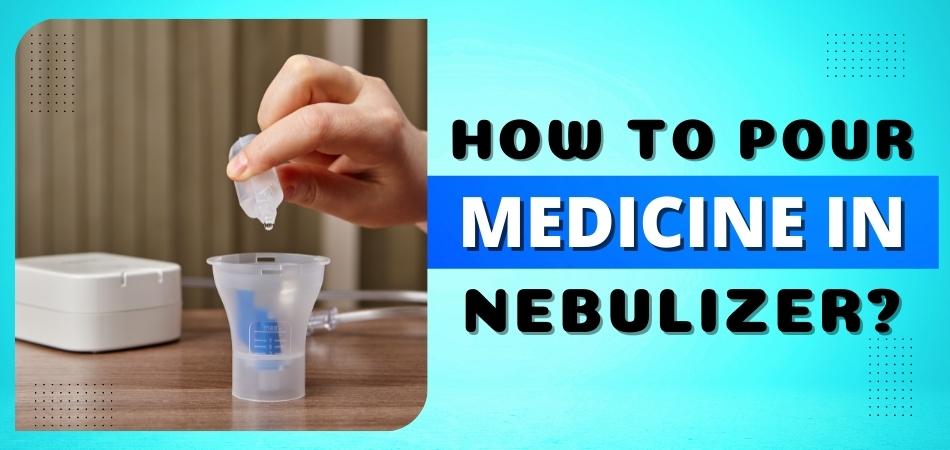When your child has croup, it can be scary. You want to do everything you can to help them feel better and get through the illness. One way you may be able to help is by using a nebulizer.
Nebulizers are machines that turn liquid medicine into a mist that your child can breathe in. This type of therapy can be very beneficial for croup, but there are some things to keep in mind before using one.
In this post, we’ll discuss the benefits of nebulizers for croup and how to use them safely and effectively.
Stay tuned!
What are the Symptoms of Croup?
Croup is a viral infection that affects the voice box and windpipe. It is a common childhood illness but can occur in adults as well. The primary symptom of croup is a harsh, barking cough. Other symptoms may include fever, runny nose, and hoarseness.

In severe cases, croup can cause difficulty breathing. Croup is most commonly caused by the parainfluenza virus, but can also be caused by other viruses such as RSV (respiratory syncytial virus) and adenovirus. Treatment for croup typically includes home remedies such as humidifiers and steam inhalation.
However, some cases may require hospitalization for treatment with steroids or nebulized Racemic epinephrine. With proper treatment, croup is usually not a serious illness and most children recover within a week.
However, complications such as dehydration or pneumonia can occur in severe cases. Therefore, it is important to be aware of the symptoms of croup and to seek medical attention if your child is having difficulty breathing.
Is a Nebulizer Good for Croup?
Croup is a viral infection of the larynx and trachea that most commonly affects young children. Symptoms include a harsh, barking cough, difficulty breathing, and a hoarse voice. In severe cases, croup can cause the airway to swell shut, making it difficult to breathe.
Nebulizers are devices that deliver medication in the form of a fine mist, which can be breathed in deeply to reach the lower airway. Medications typically used in nebulizers for croup include epinephrine and steroids. Nebulizers are effective at delivering these medications quickly and directly to the affected area.
In most cases, nebulized treatments provide relief within minutes. For this reason, nebulizers are a popular treatment option for croup. However, nebulizers require electricity to operate, so they may not be practical for use in all settings.
Additionally, some children may be afraid of the machine or dislike the feeling of the mist on their faces. Overall, nebulizers are safe and effective treatments for croup that can provide quick relief from symptoms.
How to Use a Nebulizer for Croup Patients?
For anyone who doesn’t know, a nebulizer is a small, electric machine that helps patients breathe in their medication.
It’s often used to treat conditions like asthma, COPD, and croup. And while it may seem complicated, using a nebulizer is actually pretty simple.
Here’s a step-by-step guide on how to use a nebulizer for croup patients:
Step 1: Fill the chamber with the prescribed medication. This can be done by either measuring out the correct amount of medication or using pre-filled chambers that are available at most pharmacies.
Step 2: Connect the tubing from the nebulizer to the air compressor. Make sure that all connections are tight so that air can flow freely.
Step 3: Place the mouthpiece of the nebulizer between your teeth and close your lips around it. If you’re using a mask, fit it snugly over your face.
Step 4: Turn on the air compressor and allow it to run for the duration of the treatment (usually 5-10 minutes). Breathe normally during this time and avoid talking as much as possible.
Step 5: Once the treatment is finished, turn off the air compressor and disconnect all tubing. Rinse out the medication chamber with warm water and let everything dry before storing it away.
Using a nebulizer may take some getting used to, but it’s an effective way to treat croup. So if your child has been diagnosed with croup, be sure to ask your doctor if a nebulizer would be right for them.
What are the Benefits of Using a Nebulizer?
A nebulizer is a medical device that converts liquid medication into a fine mist, which can then be inhaled. Nebulizers are commonly used to treat respiratory conditions such as asthma and COPD.
The advantages of using a nebulizer over other methods of inhalation, such as a metered dose inhaler, include the following:
- Nebulizers provide more efficient delivery of medication to the lungs. This is because the mist created by the nebulizer is able to reach smaller airways and deposit a higher concentration of medication.
- This is less likely to cause side effects. This is because the mist created by the nebulizer is less likely to deposit medication in the mouth or throat, which can lead to irritation or other side effects.
- Easier to use, especially for young children or elderly patients who may find it difficult to use an inhaler correctly.
- It can be used with a wide variety of medications, including bronchodilators, steroids, and antibiotics. In contrast, metered dose inhalers are only suitable for use with certain types of medications.
- Nebulizers are relatively inexpensive and can be purchased without a prescription. In contrast, metered dose inhalers require a prescription from a doctor.
Overall, nebulizers offer many advantages over other methods of delivering medication to the lungs. If you suffer from a respiratory condition, talk to your doctor about whether using a nebulizer may be right for you.
Saline Nebulizer for Croup
A saline nebulizer is a common treatment for croup, an infection of the upper airway. The nebulizer delivers a fine mist of saline solution into the nose and throat, which helps to thin out mucus and reduce inflammation.
This can help your child to breathe more easily and relieve symptoms such as coughing and difficulty swallowing.
Saline nebulizers are safe for both infants and children, and they are often used in combination with other treatments such as oral steroids or antihistamines.
Albuterol Nebulizer for Croup
If your child has croup, you may be wondering if an albuterol nebulizer is a right treatment. Albuterol is a bronchodilator that can help open up the airways and make breathing easier. It’s often used to treat asthma and other respiratory conditions.
Croup is usually caused by a virus, so antibiotics won’t help. But albuterol may provide some relief from the symptoms of croup, including a barky cough, hoarseness, and difficulty breathing. Albuterol comes in a liquid form that’s meant to be inhaled using a special device called a nebulizer.
A nebulizer transforms the liquid into a fine mist that your child can breathe in deeply. This allows the medication to reach the lungs more effectively. Treatment with an albuterol nebulizer typically lasts about 10 minutes.
Some children feel better after just one treatment, while others may need several treatments over the course of a few hours or days. If you’re considering using an albuterol nebulizer for your child’s croup, talk to your doctor first to make sure it’s the best option for your child’s particular situation.
Budesonide Nebulizer for Croup
If your child has croup, you may be wondering if a budesonide nebulizer is a right treatment. Croup is a viral infection of the upper airway that causes inflammation and narrowing of the airway. This can make it difficult for your child to breathe and can lead to a characteristic barky cough.
Budesonide is a steroid medication that can help to reduce inflammation in the airway. When given by a nebulizer, it is inhaled into the lungs where it can work quickly to reduce swelling. This can help your child to breathe more easily and may help to shorten the duration of their illness.
Like all medications, there are potential side effects with budesonide nebulizers. These may include coughing, wheezing, or shortness of breath. If you notice any of these side effects, please contact your child’s doctor immediately.
In most cases, these side effects are mild and go away on their own with no lasting effect on your child’s health.
Croup: When to Worry?
Croup is a virus that affects the respiratory system and usually occurs in children under five years old. The most common symptom of croup is a bark-like cough, which can be accompanied by difficulty breathing, stridor (a high-pitched noise when inhaling), and a hoarse voice.
Croup is usually caused by parainfluenza viruses, but can also be caused by other viruses such as influenza or adenovirus.
While croup can be worrisome for parents, it is generally a mild illness that will resolve on its own within three to seven days.
If your child has any of the following symptoms, however, you should contact your doctor:
- Difficulty breathing or rapid breathing
- Blueness around the lips or fingernails
- Persistent coughing lasting more than three hours
- Coughing up blood
In most cases, croup can be treated at home with simple measures such as keeping your child hydrated and using a humidifier in their room.
However, if your child is having difficulty breathing or their symptoms are worsening despite home treatment, they may need to be seen by a doctor. In some cases, hospitalization may be necessary to ensure that your child receives the oxygen they need.
How Long Does Croup Last?
If your child has croup, you may be wondering how long the illness will last. Croup is a viral infection of the larynx, or voice box, and is most common in children between the ages of 3 months and 5 years. The hallmark symptom of croup is a harsh, barking cough that sounds like a seal.
Other symptoms include hoarseness, Stridor (a high-pitched wheezing sound when breathing), and fever. In severe cases, your child may have difficulty breathing and may even turn blue from lack of oxygen. Croup usually lasts for 3 to 5 days.
The first day or two are typically the worst, with symptoms gradually improving over the next few days. Treatment for croup is aimed at relieving symptoms and making your child more comfortable.
Home treatment includes humidifying the air (with a cool mist vaporizer or by running a hot shower), elevating your child’s head while sleeping, administering oral steroids (such as prednisolone), and providing plenty of fluids to prevent dehydration.
If your child is having difficulty breathing, you should take them to the hospital for further treatment. While croup can be a frightening experience for both parents and children alike, it is important to remember that it is generally a mild illness that will resolve on its own within a week.
Should You Use a Nebulizer With Croup?
If your child has croup, you may be wondering if you should use a nebulizer. A nebulizer is a device that turns liquid medication into a fine mist that can be inhaled through a mask or mouthpiece. Inhaling the medication through a nebulizer can help to open up the airways and relieve symptoms of croup.

There are several factors that you should consider when deciding whether or not to use a nebulizer for croup. One factor is the severity of your child’s symptoms. If your child is having difficulty breathing or their symptoms are severe, then using a nebulizer may be necessary.
Another factor to consider is how well your child tolerates inhaling the medication from the nebulizer. Some children find it difficult to tolerate wearing the mask or mouthpiece for the duration of treatment, which can be anywhere from 5-15 minutes. If your child does not tolerate inhaling the medication well, then using a nebulizer may not be an effective treatment option.
If you decide to use a nebulizer for croup, there are some things you should keep in mind. Make sure to follow the instructions on how to use the device properly. It’s important that you clean and disinfects the equipment after each use according to the manufacturer’s instructions.
You will also need to have on hand any medications that will be used in the nebulizer, such as saline solution or bronchodilators like albuterol (ProAir HFA, Ventolin HFA). Be sure to ask your doctor about what type of medication is best for your child’s particular case of croup.
What is the Best Thing to Do for Croup?
Croup is a viral infection of the voice box and windpipe that most often affects young children. It is characterized by a harsh, barking cough and a hoarse voice. Croup usually occurs in the fall and winter months.
The best thing to do for croup is to seek medical attention as soon as possible. A doctor may prescribe medication to help relieve symptoms, such as an inhaled steroid or nebulized epinephrine. In severe cases, hospitalization may be necessary.
During hospitalization, your child may receive oxygen therapy and IV fluids. In the meantime, there are some things you can do at home to help ease your child’s symptoms:
- Sit upright: This will help your child breathe more easily.
- Humidify the air: A cool-mist humidifier or steamy bathroom can help loosen secretions in the throat.
- Drink plenty of fluids: This will keep your child hydrated and thin out mucus.
- Soothe with a warm drink: Warm liquids can help reduce inflammation in the throat. Avoid giving your child very hot drinks, however, as this could scald their throat.
Can You Do Breathing Treatments for Croup?
Croup is a viral infection of the upper airway that results in inflammation and narrowed airways. It is most common in young children but can occur in adults as well. Symptoms of croup include a barking cough, hoarseness, difficulty breathing, and a sensation of something “sticking” in the throat.
Treatment for croup typically includes humidified air (from a cool-mist humidifier or steam shower), medication to reduce inflammation (such as steroids), and sometimes antibiotics if there is evidence of bacterial infection.
In severe cases, hospitalization may be necessary for treatment with oxygen or mechanical ventilation. Breathing treatments are often used to treat croup because they help to open up the airways and make it easier to breathe.
Treatments usually consist of inhaling a medicated aerosolized solution through a face mask or mouthpiece. The medication helps to reduce inflammation and swelling in the airway so that breathing becomes easier.
Some common medications used for croup include epinephrine, dexamethasone, and racemic epinephrine. In most cases, croup can be treated at home with self-care measures and over-the-counter medications.
However, it is important to seek medical attention if your child has any difficulty breathing, starts turning blue around the lips, or has persistent coughing that lasts for more than an hour or two despite home treatment measures. These could be signs of a more serious problem requiring immediate medical intervention.
Bottom Line
Croup is a viral infection of the upper airway that causes inflammation and swelling. This can make it difficult for your child to breathe.
A nebulizer is a machine that turns liquid medication into a fine mist that can be inhaled through a mask or mouthpiece.
The medication helps to reduce inflammation and open up the airways so that your child can breathe more easily. In most cases, croup can be treated at home with over-the-counter medication and plenty of rest.
However, if your child’s symptoms are severe, you may want to consider taking them to the hospital for treatment.
Why is TruNeb™ the Best Portable Nebulizer?
We all know how important it is to get our medications as quickly and efficiently as possible, which is why the TruNeb™ nebulizer may be just what you’re looking for.
This portable mesh machine turns your liquid medication into a mist we breathe in helping us reach those hard-to Reach places inside of ourselves more easily than ever before!
Our portable mesh nebulizer machine works for both kids and adults, making it easy for anyone who needs nebulized therapy. Order your own nebulizer now!




